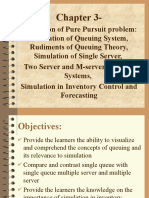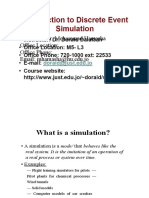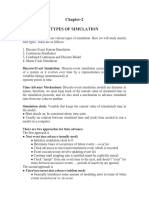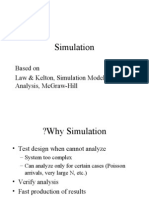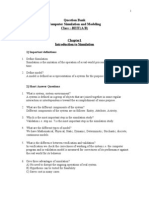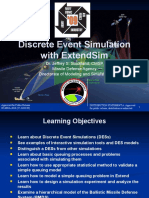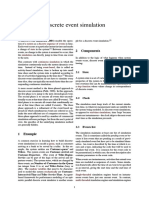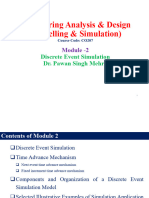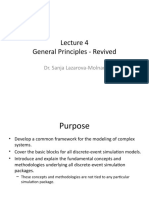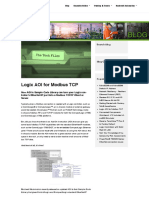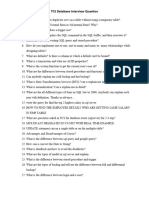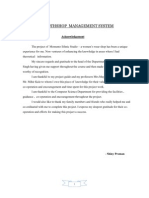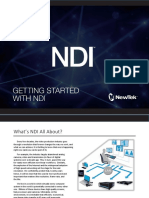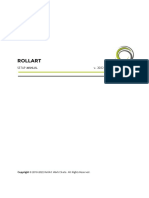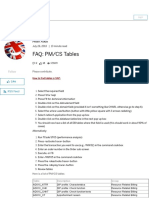0% found this document useful (0 votes)
28 views11 pagesModule 6 Queuing System
The document discusses queuing systems, which model waiting lines and service processes to predict performance metrics like wait times and queue lengths. It covers discrete-event simulation (DES) for event-driven systems and continuous modeling using differential equations for systems with continuously changing states. The key takeaway is that these modeling techniques complement each other, providing a comprehensive toolkit for analyzing and optimizing real-world systems.
Uploaded by
icageneviveCopyright
© © All Rights Reserved
We take content rights seriously. If you suspect this is your content, claim it here.
Available Formats
Download as PPTX, PDF, TXT or read online on Scribd
0% found this document useful (0 votes)
28 views11 pagesModule 6 Queuing System
The document discusses queuing systems, which model waiting lines and service processes to predict performance metrics like wait times and queue lengths. It covers discrete-event simulation (DES) for event-driven systems and continuous modeling using differential equations for systems with continuously changing states. The key takeaway is that these modeling techniques complement each other, providing a comprehensive toolkit for analyzing and optimizing real-world systems.
Uploaded by
icageneviveCopyright
© © All Rights Reserved
We take content rights seriously. If you suspect this is your content, claim it here.
Available Formats
Download as PPTX, PDF, TXT or read online on Scribd
/ 11







